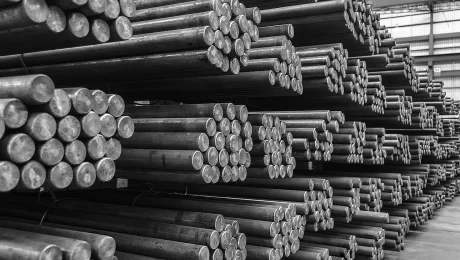Unlocking the Secrets of Mechanical Properties: What They Are and Why They Matter
Have you ever wondered what makes a metal strong or flexible? Or how different materials respond to forces like twisting, pulling, or crushing? If you’re curious about these questions, you’re about to discover the fascinating world of Mechanical Properties—the hidden traits that tell us how materials behave in real life.
What Are Mechanical Properties?
Let’s start with a simple idea: Mechanical properties are the characteristics of a material that describe how it reacts when forces are applied to it. They are the “personality traits” of materials, telling us if a metal is tough or brittle, or if a plastic can stretch without breaking. These properties help engineers decide which materials are right for making bridges, cars, airplanes, or even your favorite toys.
Why Are Mechanical Properties Important?
Understanding these properties is important because it’s what keeps us safe and helps make better products. For example, knowing if a steel bar can hold heavy weight without bending or snapping allows engineers to build stronger, safer structures. Without this knowledge, we could end up with buildings that collapse or cars that can’t withstand accidents.
Different Types of Mechanical Properties
There’s a lot to learn about mechanical properties, but some are more common than others. Here are some key ones:
1. Strength
This tells us how much force a material can handle before breaking. Imagine pulling on a rubber band until it snaps; the strength of the rubber band is how much pulling force it can withstand.
2. Ductility
Ductility is the ability of a material to stretch or bend without breaking. Think of a piece of copper wire that can be bent into different shapes many times. It’s a good property because it allows materials to deform rather than break suddenly.
3. Hardness
Hardness measures how resistant a material is to scratching or indenting. For instance, diamond is extremely hard, which is why it’s used in cutting tools. Steel that’s hard can resist wear and tear in machinery.
4. Toughness
Toughness tells us how much energy a material can absorb before it breaks. It’s a combination of strength and ductility. Imagine a baseball bat that can absorb shattering impacts without breaking—this bat would be considered tough.
5. Elasticity
Elasticity is how well a material returns to its original shape after being stretched or compressed. A good example is a rubber band that snaps back after being pulled.
How Mechanical Properties Are Tested
Scientists and engineers perform special tests to measure these properties. Common tests include:
- Tensile test: Pulling a material until it breaks to see its strength and ductility.
- Hardness test: Using various tools to scratch or indent the surface.
- Impact test: Dropping a weight onto a material to see how much energy it can absorb without breaking.
Mechanical Properties of Steel Round Bars
When you look at steel round bars—long, round pieces of steel used for construction and manufacturing—knowing their mechanical properties is crucial. Steel must be strong enough to support huge loads, ductile enough to bend without breaking, and tough enough to withstand impacts. Different grades of steel are used based on specific mechanical properties required for the job. For example, some steel types might have high ductility for forming into thin wires, while others might be very hard to resist wear and tear in machinery.
Choosing the Right Material Based on Mechanical Properties
Picking the right material isn’t just about strength. You need to understand the balance of all these properties to make your project safe, durable, and cost-effective. For example, if you need a material that can bend without breaking, you’ll look for high ductility. If resistance to surface scratches is important, hardness matters most.
The Future of Mechanical Properties in Material Science
Advances in technology allow scientists to develop new materials with custom mechanical properties tailored for specific needs. From ultra-strong steel to flexible plastics, understanding these properties helps innovation grow and creates safer, longer-lasting products.
Conclusion
Next time you see a building, a car, or a piece of machinery, think about the Mechanical Properties that make it possible. They are the quiet heroes behind every structure and device, ensuring they work safely and efficiently. Remember, knowing the basic properties like strength, ductility, hardness, toughness, and elasticity is the first step to understanding how materials perform in the real world. So, explore more about these properties—your future projects might depend on it!
Secondary Keywords: strength, ductility, hardness, toughness, elasticity

